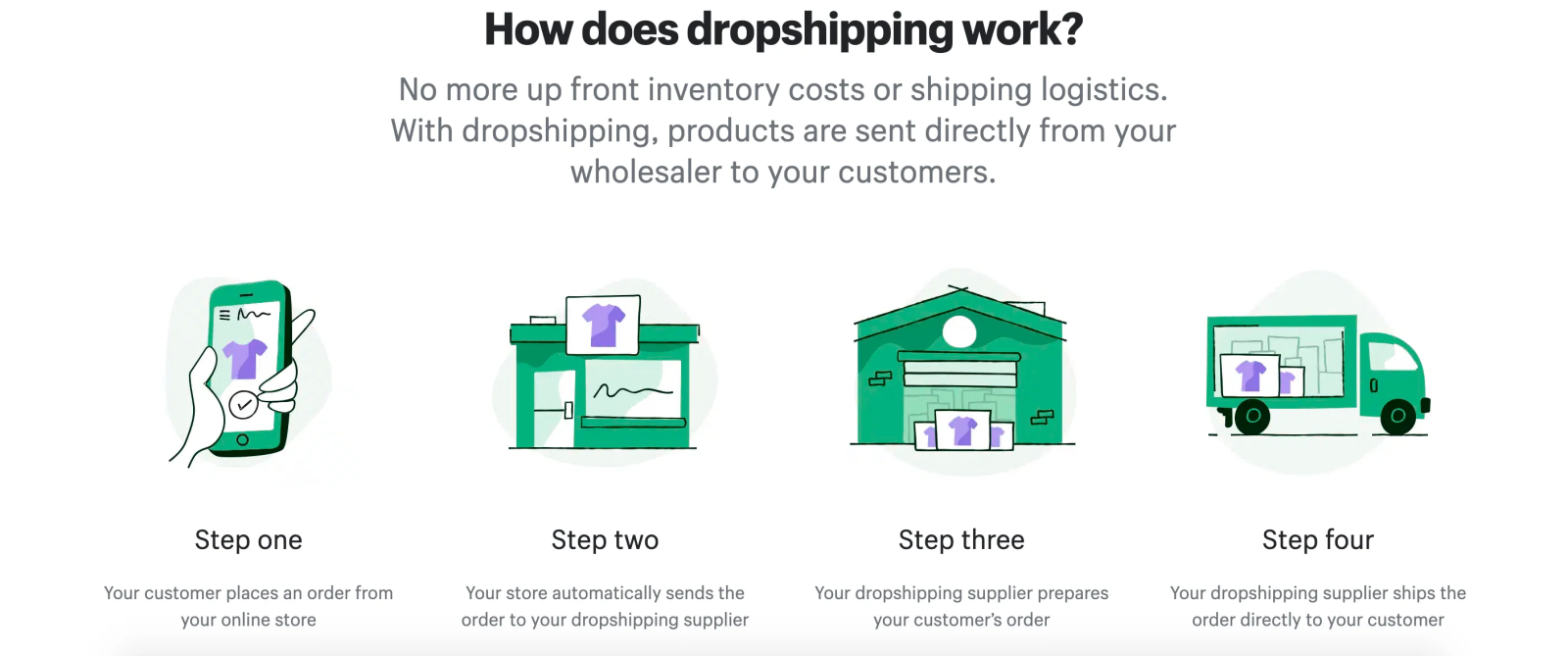Starting a dropshipping business is one of the easiest ways to enter the world of e-commerce without the hassle of inventory management. With the right approach, you can build a profitable online store and generate steady income. Let’s break down everything you need to know to start your own dropshipping business.
What is Dropshipping?
Dropshipping is a business model where you sell products without holding inventory. When a customer places an order, you purchase the product from a third-party supplier, who then ships it directly to the customer. Your job? Run the store, market the products, and manage customer service.
Why Choose Dropshipping?
Dropshipping is popular for a reason! Here are some benefits:
Low startup costs: No need to buy inventory upfront.
Minimal risk: You only purchase products after you make a sale.
Location flexibility: You can run your business from anywhere with an internet connection.
Wide product selection: Sell anything without worrying about storage.
Scalability: Easily expand your store as demand grows.
Step 1: Choose a Niche
Your niche determines what you sell, so choose wisely! Here’s how to find a profitable niche:
Pick something trendy but evergreen (e.g., eco-friendly products, pet supplies, or fitness gear).
Research competition and demand using tools like Google Trends and keyword research.
Ensure reasonable profit margins by checking product costs vs. potential pricing.
Target a specific audience to build brand loyalty.
Step 2: Find Reliable Suppliers
Suppliers are the backbone of your dropshipping business. Here’s how to find trustworthy ones:
AliExpress, Spocket, and SaleHoo are great starting points.
Choose suppliers with fast shipping, quality products, and good reviews.
Order sample products to test quality and delivery speed before selling.
Establish a strong relationship with your suppliers to ensure smooth operations.
Step 3: Create Your Online Store
Your store is where customers will shop, so it needs to look professional and trustworthy.
Pick an e-commerce platform like Shopify, WooCommerce, or BigCommerce.
Choose a domain name that is short, catchy, and relevant to your niche.
Design your store with a clean, user-friendly layout.
Add product descriptions, pricing, and high-quality images.
Set up secure payment gateways like PayPal, Stripe, or credit card options.
Step 4: Optimize for SEO
Want free traffic? SEO (Search Engine Optimization) helps your store rank higher in search engines.
Use keyword-rich product titles and descriptions.
Optimize your site’s loading speed and mobile responsiveness.
Write engaging blog posts related to your niche.
Get backlinks from relevant websites to boost your site authority.
Step 5: Market Your Dropshipping Store
No customers, no sales! Marketing is key to attracting buyers.
Run Facebook and Instagram ads to target your ideal audience.
Leverage influencer marketing by collaborating with niche influencers.
Use email marketing to build relationships and drive repeat sales.
SEO and content marketing can bring organic traffic over time.
Engage on social media to build a loyal community.

Step 6: Manage Orders and Customer Service
Customer satisfaction keeps your business alive. Here’s how to manage it effectively:
Automate order processing using tools like Oberlo or DSers.
Provide quick and helpful customer support via email, chat, or social media.
Handle returns and refunds professionally.
Keep an eye on order tracking and delivery times to avoid complaints.
Step 7: Scale Your Business
Once you start making sales, it’s time to scale up!
Expand your product range to attract more customers.
Invest in better marketing strategies for higher conversions.
Optimize your store using A/B testing to improve performance.
Consider outsourcing tasks like customer service and marketing as you grow.
Common Mistakes to Avoid in Dropshipping
Avoid these pitfalls to set yourself up for success:
Choosing the wrong niche – Research before committing.
Ignoring customer service – Happy customers lead to repeat sales.
Underestimating shipping times – Set clear expectations with customers.
Not testing products – Sell only quality items to maintain credibility.
Relying only on one marketing channel – Diversify for better reach.
Read More: The Latest AI Tools and Apps Revolutionizing 2025
Conclusion
Starting a dropshipping business is an exciting journey, but success comes with effort and smart strategies. Choose a profitable niche, find reliable suppliers, build a great store, optimize for SEO, and market like a pro. Avoid common mistakes, provide top-notch customer service, and scale as you grow. Ready to dive in? The world of e-commerce is waiting for you!
Explore other popular Posts:
Blog | News | Entertainment | Education | Sports |
Technology | Cryptocurrency | Stock | Home | Sitemap





